#two-leaf toothwort
Text

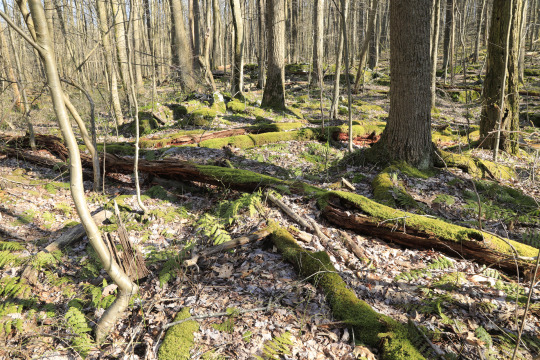
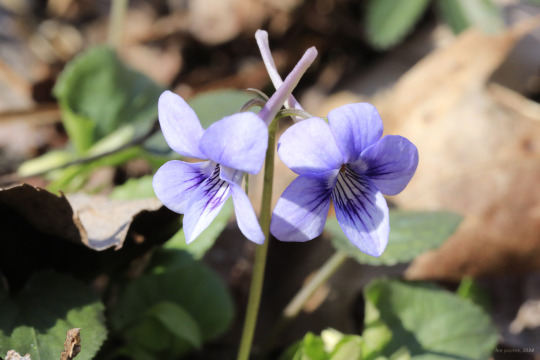
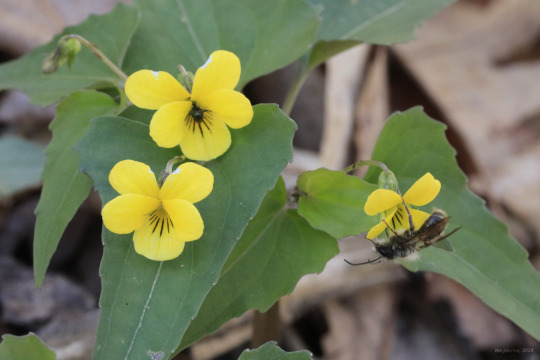
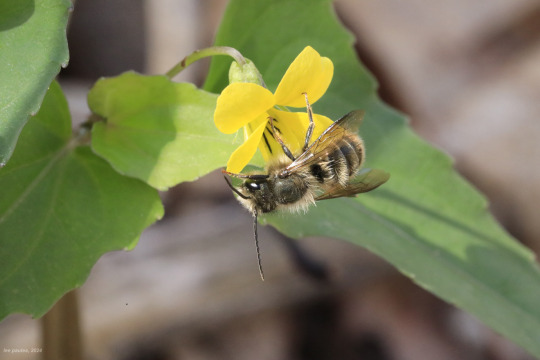

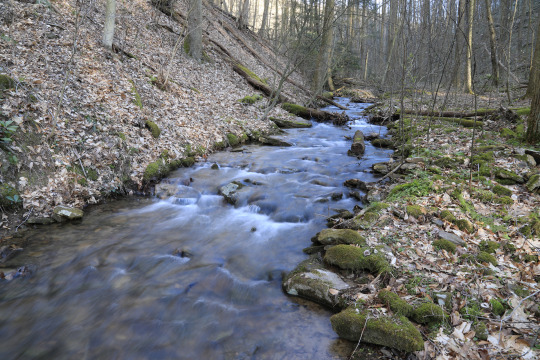
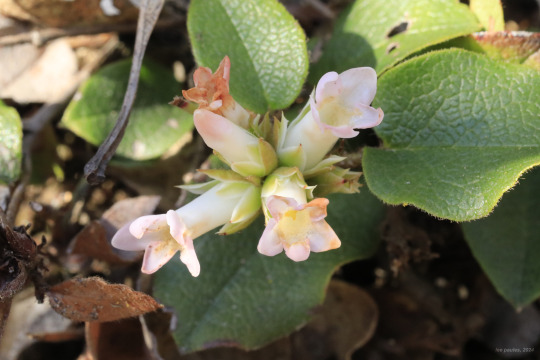
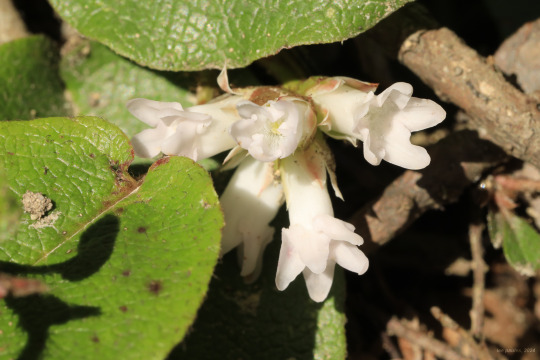
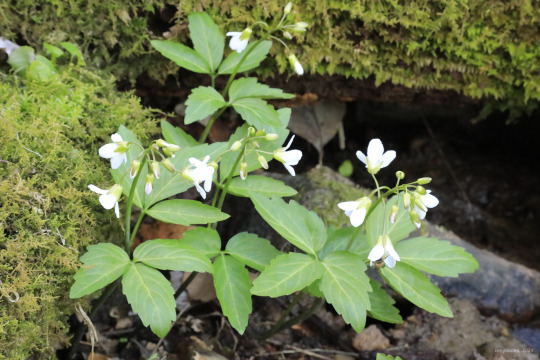
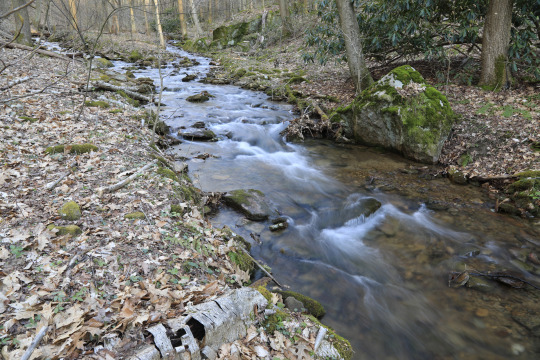
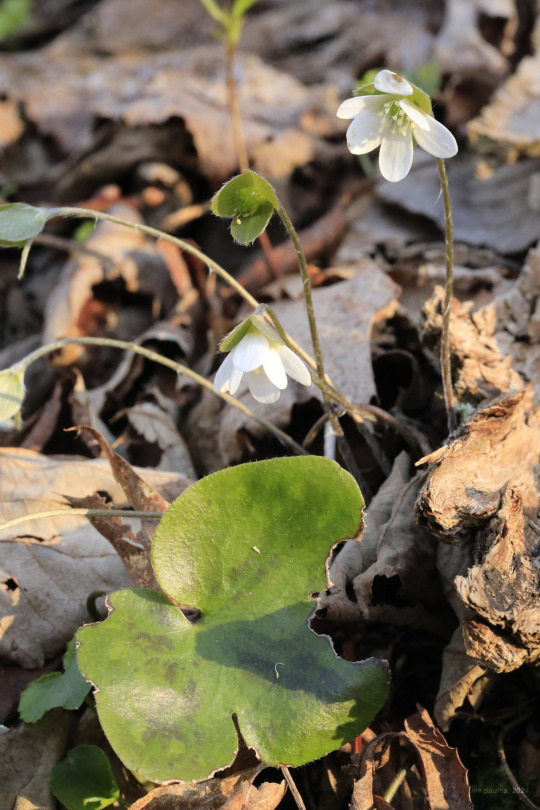
NC-WV is finally enjoying a dry, sunny spring weekend after weeks of near nonstop, flooding rain. That was all the incentive I needed to take my first long hike of the spring at Coopers Rock State Forest. The wildflower progression on top of Chestnut Ridge is running about 2 weeks behind that at lower elevations, but there were plenty of early spring beauties on display this afternoon. From top: Allegheny serviceberry (Amelanchier laevis); long-spurred violet (Viola rostrata); halberd-leaved yellow violet (Viola hastata); downy rattlesnake plantain (Goodyera pubescens); trailing arbutus (Epigaea repens), which is not herbaceous but a mat-forming, evergreen shrub in the health family; broadleaf toothwort (Cardamine diphylla), also known as two-leaf toothwort; and round-lobed hepatica (Hepatica americana), which prefers drier woods than sharp-lobed hepatica (Hepatica acutiloba), which I typically find growing on the rocky, calcareous slopes along the Monongahela River.
#appalachia#vandalia#west virginia#wildflowers#flora#spring#coopers rock state forest#chestnut ridge#allegheny serviceberry#long-spurred violet#halberd-leaved yellow violet#downy rattlesnake plantain#trailing arbutus#broadleaf toothwort#two-leaf toothwort#round-lobed hepatica
86 notes
·
View notes
Text
This tiny flower teaches us all we need to know about growing old. (Washington Post Opinion)

For most of my life, I marked the progress of spring by its blooms. First came the crocuses of February and the daffodils of March, followed, in quick succession, by the tulips and hyacinth, the lilac and flowering cherry and the saucer magnolias. Later, the azaleas would explode in a pink and red riot — and, before long, the peonies would unfurl to proclaim the approach of summer. Each arrival announced itself with a spectacular burst of color and, often, a sweet perfume that filled the yard.
But lately I’ve come to share the view of Wendy Cass, the head botanist at Shenandoah National Park, when she sees a waving clump of daffodils.
“Boring,” she says.
What I had been watching all those years was spring as humans made it. This year, I’m experiencing spring as God made it.
Those tulips, lilacs and all the rest were imported from Europe and Asia, curated and genetically manipulated by humans so they would grow with no effort and display improbably sweet and showy blooms. They are beautiful, no question, and I will always smile when I see a host of golden daffodils as Wordsworth did, “Beside the lake, beneath the trees/ Fluttering and dancing in the breeze.”
But this year, I’ve instead been walking in the still-bare forest and looking for Dutchman’s breeches.
In case you are wondering why some European left his pants in the woods, let me explain that the Dutchman’s breeches is my new favorite flower. Its bloom, just a half-inch tall, looks like an upside-down pair of white pantaloons, belted at the waist with a yellow rope. Native to this part of the eastern United States, it’s one of the first wildflowers of spring, popping up in late March or early April, flowering for a couple of weeks and disappearing as quickly as it came. Its entire growing season — from the time its first green shoot emerges from the earth to the moment its last bit of green foliage dies for the year — is just a couple of months.
Yet so much life comes from those delicate trousers. It’s one of the first foods in the forest after a long winter, and a crucial bit of sustenance for the queen bumblebee. When she emerges from her overwintering nest in the ground (the other bees die during the winter), she stretches her long tongue into the Dutchman’s breeches to reach its nectar, which nourishes her as she lays the eggs that will replenish the colony with the next generation of workers.
The Dutchman’s breeches are part of a class of plants felicitously known as “spring ephemerals.” They appear on the forest floor before the trees have leafed out, taking advantage of the sunlight. They flower, go to seed and die back within just six to 12 weeks. These are flowers you generally won’t find at florists: They are bluebells and bloodroot, trout lilies and toothwort, spring beauties and rue anemone. They are joined by other flowers that, while not “true” ephemerals (their foliage lasts a bit longer), generally share the same category: the great white trillium, hepatica, star chickweed and mayapple.
They are notoriously difficult to cultivate, hard to transplant and even harder to grow from seeds. It can take seven years from the time a trillium seed is planted to the appearance of just one of its three-petal flowers. Ephemerals are finicky and fussy plants, growing only in forests and typically near streams. They aren’t as bold and colorful as garden-variety flowers, and most don’t even have a scent. You won’t spot spring ephemerals from your car window with an “ooh” and an “ah.” To find them, you have to go on a treasure hunt in the forest. Their flowers can be tiny — sometimes just a millimeter or two — and you could easily miss them if you don’t look carefully.
That is just the point.
4 notes
·
View notes
Text
Garden news:
Two orders of plants came in this week! Also got contacted for the other pickup order but they let me know they’d prefer to wait a couple weeks since one of the plants was still pretty small. Not only do I not have any personal experience with that species but they’re literally the only place that carries it so I told them I trust their judgment and I can wait. So I will!
My large toothwort seems to be very happy in my window well and I like that I now have a plant to look at from my basement. Can’t wait to add a fern.
Speaking of which, that order will be coming this weekend or in this coming week.
My wood lilies are coming up! I thought they had died last summer. And I’ve ordered four more...lol Oh well. Judging by my Michigan lilies’ babies I think they must act as a kind of ephemeral when they’re young. Because while the mature Michigan lilies will last in some form pretty much until fall, the babies they made died in the spring last year. I thought I had done something wrong but they came up again this year and are a little bigger this time around. So I guess it’s the same with the wood lilies.
One of the nurseries I ordered from contacted me about a replacement since they didn’t have one of the plants I wanted (it died), which was already a replacement for something else, but that’s okay because I already have that plant and only ordered it again because I didn’t know if it had survived its first winter in my garden (it did!). So I’m getting a species I don’t have that they hadn’t yet marked as available on their website. :) Also they said they’d put me on a waiting list for two other species they carry that I really want and can’t find anywhere else so I’ll be notified as soon as they get them! If they get them this year, which they hopefully will. My common tall sunflowers tried to pull their trick of blending in with the pearly everlasting again, but no! It also sent a shoot up between the sidewalk stones. Because of course it did. I’ve also now realized the difference between the common tall sunflower shoots and the stiff sunflower shoots, so I pulled a bunch of the common tall sunflower shoots because they are bullying the stiff sunflower. You stay on your side! So far the Canada goldenrod I relocated is oddly well-behaved, but I’m sure that won’t be for long.
Something, likely a caterpillar, is eating my purple giant hyssop, but I can’t find the damn thing. It’s probably happening at night. Maybe I’ll go out there with a flashlight this evening. A squirrel dug up one of my squirrel corn bulbs but it’s okay, the plant is cool with it, because sometimes the bulbs have “pups” and the squirrels’ digging loosens and scatters them which allows the plant to spread. And the squirrels don’t actually eat them, so it’s fine.
I think I’ve lost my bigleaf lupine. I hope I’m wrong about that because I got that species entirely by accident when it was supposed to be a sundial lupine (which I now have the real thing). I hope I’m wrong because although it is a native species, most native plant nurseries won’t carry it because it can be got at regular garden centres but the problem there is that they’re nearly always cultivars, and some of those cultivars have turned the plant super aggressive, so it acts like an invasive species even though it isn’t. The one I got by accident was a mixup wherein they were supposed to get sundial lupine and sold it as such, but then the plants grew with too many leaflets and it was obviously not that species. So they let everyone know when they realized and gave out a coupon, but I was overjoyed when they said what it was instead, and this bigleaf lupine was a very well-behaved plant. Anyway, reason I worry is that my sundial lupine in full leaf right now and I don’t remember when the bigleaf lupine emerged in the spring last year but there’s not even a hint of it yet. I dearly hope I’m wrong and it’s just taking its time.
My hopniss, wild yam, bush clovers, and dwarf milkweed aren’t showing any signs of life yet but I don’t know when they’re supposed to so maybe they’re fine. The butterflyweed hasn’t yet either but I don’t expect it to until like July. My buffalo berry is just starting to show signs of life. Thought I’d lost it, but appears not!
Weeds: I finally got to plant a native thistle but that hasn’t stopped the non-native ones from being a nuisance. There’s one in particular that spreads by rhizome. It’s not prickly but it is prolific. I’ve allowed one to stay until it flowers just so I can identify the bloody thing. I’m still pulling up garlic mustard and dog-strangling vine from time to time but I’ve got a good handle on them now. I remember a couple years ago it seemed impossible that I would be able to keep on top of them, but I hardly ever see the dog-strangling vine on the back hill anymore and it’s eventually going to get to the point where they’ll only end up in my garden from the wind blowing the seeds in now and then. Dandelions are dandelions. They don’t hurt anything, there’s just a lot of them. I’ll pull them up from the beds, but not the lawn.
Flowers! My Virginia strawberry is flowering (white) and maybe it’ll make fruit this year. My woodland strawberry is too (white) and will probably make fruit this year since it did last year. My common elderberry has buds (will be white) and will hopefully make more than one fruit this year, the multiple smallflower forget-me-nots (blue) around the yard are in flower, and both Jack-in-the-pulpit plants still have their flowers (striped purple and green). My spicebush is in flower (yellow), all my violets are flowering (purple and white), my tall bluebells have opened their flowers (blue), and my Virginia bluebells are still budding (will be intense blue). My perennial flax is in flower (blue violet) and so is my fragrant sumac (green), my chickweed (white), and my rock cress (white). My thrift seapinks are putting up buds (will be vivid magenta), and my field pussytoes were already in flower (white) when I got it. One of my streamside fleabanes is about to open its bud (likely pink). Both my columbines are blooming (one red and yellow and the other blue and yellow), and my alexanders (yellow) too. My wild geranium has gotten quite sizeable this year and has many flowers (pink). My woodland phlox is going to bloom this year (will be white or blue). My barren strawberry certainly is (yellow). My blueberry that I moved last year has lots of flowers (pale green). My bog rosemary is flowering too (pink) and my tall meadow rue has its flower spike up (will be white I think). My Canada garlic and wild chives are starting to put buds up too (pink). Plenty more to come!
#gardening#native plants#native plant garden#North American native plants#native plants of Ontario#Carolinian zone#edible native plants
6 notes
·
View notes
Text

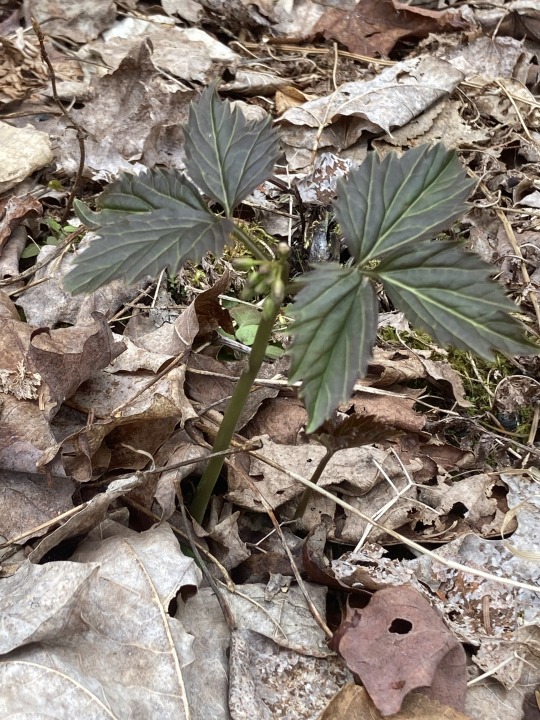
Cardamine diphylla- two leaf toothwort, crinkleroot
0 notes
Text
How Daffodils and Spring Ephemerals Benefit the Ecosystem (And the Garden!)
Daffodils and other spring ephemerals are a sunny sight in early spring, but these plants benefit the ecosystem beyond their beauty and can benefit a permaculture garden too!
What are Spring Ephemerals?
Spring ephemerals are herbaceous plants that live in deciduous forests. Ephemeral means "lasting for a very short time" and these plants grow leaves, gather energy, put out flowers, and reproduce all before the trees leaf out in the spring.
This early season is the perfect time to pop up because they get access to the full sun while other plants are still dormant. This short period of activity fuels the spring ephemerals' energy needs for the rest of the year.
Daffodils and other spring ephemerals are largely animal resistant. They reproduce through seed as well as sending out new shoots from their root bulbs, which is why we often see daffodils growing in large clumps or patches. When the weather gets warmer and the trees begin to leaf out, spring ephemerals are signaled to go dormant until next spring and naturally die back for the season.
Ecological Benefits of Spring Ephemerals
Thanks to the nutrient rich rains in early spring, spring ephemerals are packed with nutrients. Their root systems catch and hold these nutrients and moisture and prevent them from washing away. Their roots also prevent soil erosion. When the plants die back, the excess nutrients they've been holding onto will enrich the plants and soil around them.
Gardening Benefits of Spring Ephemerals
Daffodils and other spring ephemerals provide nectar for early season pollinators. If you have other garden plants flowering during this time they'll improve the pollination of those too!
If you plant spring ephemerals on the high edges of your garden, all the nutrients and moisture they've been holding onto will enrich your garden soil and plants when they die back.
5 Spring Ephemerals (That do Well in The Garden Too!)
1. Ramps, Allium tricoccum: Ramps are useful spring ephemerals because they're edible and delicious! Cousins of garlic, onions, and chives, they're easy to grow in shady areas as long as they can access the early spring sun. Both the leaves and the roots are edible, but it's important to leave most of the root bulbs behind and only harvest one leaf off of each plant (they only grow two) so your ramps survive for next year!
2. Daffodils, Narcissus spp.: Daffodils are a common flower for landscaping and flower gardens. They are NOT edible, the bulbs are *TOXIC*, but still a useful plant for the garden! Daffodils leapt from the shady forest and evolved to live happily in sunny areas. They help with grass suppression and work well planted in a circle around a fruit or nut tree to keep grass from competing with it for soil or water. Daffodils also have huge bulbs which help repel digging animals like gophers and their above-ground leaves repel deer and other animals.
3. Camas, Camassia spp.: Another beautiful flowering spring ephemeral, camas are like daffodils and have evolved to live in sunny areas and they can also be used around trees to suppress grass. Camas bulbs are edible and were an important food for western Indigenous Americans. In order to eat the bulbs the entire plant must be harvested, so plan to replace the bulbs each year if you choose to harvest them.
4. Spring Beauty, Claytonia virginica: This dainty flower is an important source of nectar for early season pollinators. They are edible, but they're slow growing and rare in some areas so take extra caution in harvesting and be very sparing in what you take. The plant grows small roots that look like tiny potatoes or "fairy spuds", they can be eaten like regular potatoes if you don't mind their small size. The leaves and flowers are also edible raw or cooked. Spring beauties do well planted with strawberries because right as the spring beauties go dormant the strawberries leaf out.
5. Toothwort, Dentaria spp.: Toothwort likes rich, moist soils. In the wild it tends to grow in the deeper forest, but it makes a nice ground cover that dies back in the summer heat. The leaves and roots are edible raw or cooked. The leaves are nutritious and are tasty added to salads or soups. The fresh roots are crisp and peppery, they can be used to make a horseradish substitute.
Spring Ephemeral Harvesting Rules
1. Be positive that you've properly identified any species you intend to consume. Never munch on a hunch!
2. Never harvest more than 1/3 of a group of wild spring ephemerals. Taking less is always best when foraging in the wild. If you know a species is uncommon or over-harvested in your area, skip foraging it entirely for the sake of the ecosystem.
3. Don't collect seeds or whole plants from the forest. Source from native plant nurseries if you want to grow them.
Be safe and happy gathering and growing!
Source
#foraging#permaculture#gardening#spring ephemerals#daffodils#ramps#camas#spring beauties#toothwort#early spring#spring foraging#spring garden#forest garden#food forest
106 notes
·
View notes
Photo



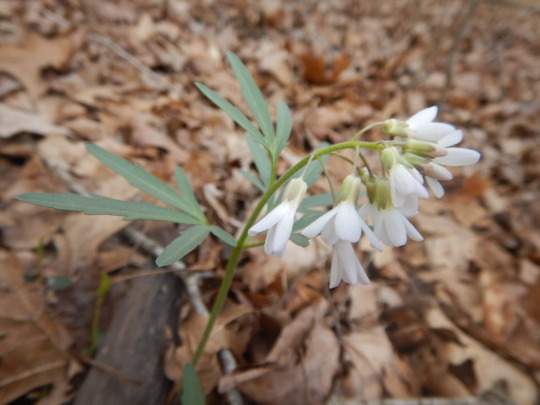
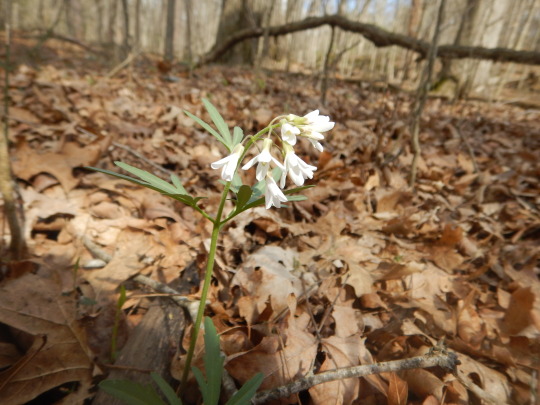

Cardamine concatenata
Cut Leaf Toothwort variability in leaf morphology is common among individuals in each population; the two most common are three lobed and five lobed morphs.
Photographed at Caldwell Nature Preserve
14 notes
·
View notes
Text
The wood I was in this morning had: trout lilies, cut-leaf toothwort, rue anemone, wood anemone (lots and lots and lots), bloodroot, jack-in-the-pulpit, mayapple, wild geranium, black cohosh, round-lobed hepaticas, wild dogwoods (in bloom), long-spurred violets, and two other species of violet, blue and yellow, solomon seal, false solomon seal, and nodding trillium. Probably more I’m not remembering and even more I didn’t see. Most of them weren’t in bloom anymore, but I was still pretty happy to be there!
70 notes
·
View notes
Text
[dropcap style=”font-size: 60px; color: #9b9b9b;”] W [/dropcap]ith the perpetual crowd at The Sinks location in the Smokies, it was surprising to me that hardly anyone hikes this trail that starts at the popular waterfall along Little River Road. Another surprise was the abundance of spring ephemeral wildflowers found along the trail. I counted more than a dozen varieties, and plenty of each. Once you reach Meigs Creek, it’s time to change to your water shoes as you will be crossing the creek frequently. My brother and I hiked Meigs Creek Trail to the first crossing on Tuesday, April 17, 2019 beginning at 2:30PM and finishing about 4:45PM. Our plan was to take the trail to Upper Meigs Falls, then return.
[box type=”info”]
Total Length: 3.7 miles Hike Duration: 2.25 hours
Hike Rating: Moderate. Some uphill that will test you. Otherwise, not too bad.
Hike Configuration: Out and back Blaze: None needed
Elevation Start: 1,575 feet Elevation Gain: 395 feet
Trail Condition: Quite good. A few roots and rocks. Wet creek crossing.
Starting Point: On the right (west) side of The Sinks parking area.
Trail Traffic: We encountered two other hikers on this Spring Break weekday.
How to Get There: Head to The Sinks, 12 miles west of Sugarlands Visitor Center, or 6 miles east of the Townsend Y on Little River Road. Parking for about 15 cars. [/box]
[sgpx gpx=”/wp-content/uploads/gpx/Meigs_Creek_Trail-Smokies.gpx”]
There are a couple of nature trails that take off from The Sinks parking area, so be sure you aren’t starting out the wrong direction. Meigs Creek Trail is on the west side, beyond the stone overlook. It is clearly marked with a Park Service trail sign. It starts up a fancy stone stairway, then levels out as it enters the forest.
And a nice forest it is, oaks and maples mostly, beginning the spring greening on this beautiful mid-April day. Soon, on your left, you will reach a swampy area that once was the channel for Meigs Creek prior to the logging days of the early 20th century.
You make a sharp right turn and begin the ascent of a ridge of Curry He Mountain. The trail is lined with christmas fern and dog hobble, and hundreds of early spring wildflowers. Look for violets and chickweed, dwarf iris and foamflower, lots and lots of purple phacelia, toothwort and bellwort, and plenty of white trillium.
The sounds of Little River below to the right become more muted as you near the top of the initial 400 foot climb. The plentiful mountain laurel that lines the trail will be in full bloom in May, and huckleberry bushes provide a nice late summer snack. Short leaf and white pines mix with the oaks and maples to provide a nice canopy of shade to relieve you from the climb.
Just a warning: Adopt-a-Trail volunteers say they’ve spotted timber rattlers on the sunny spots in warm weather, though that was not our experience in April.
Upon reaching the crest of the ridge, the trail turns east and begins a modest descent, before turning to the south for its arrival at Meigs Creek. This is the first of 18 stream crossings… yes, 18. Have you been practicing your rock hopping? Hopefully so, because you will sure need it.
The crossings are all easy in low water, less so at moderate levels, and may require water shoes and rolled up pants following a rainy period. The latter is what we encountered, and we weren’t prepared with appropriate footwear, mainly because we kinda added this trail on the fly after hiking elsewhere earlier in the day.
So we turned around at this point, but I will be back with my trusty MacKenzie’s in the future to explore the rocky walls and narrow valley that are further upstream. There is also a waterfall up there.
Summarizing Meigs Creek Trail, use this hike to fill a couple hours as far as the first creek crossing like we did, or continue to the end for a seven mile round trip. It’s a surprisingly nice wildflower hike in April. Combine that with spring greening for a very colorful venue. If you wish to continue through the 18 creek crossings, either go during the dry season, or bring appropriate shoes and perhaps a hiking pole.
#gallery-0-5 { margin: auto; } #gallery-0-5 .gallery-item { float: left; margin-top: 10px; text-align: center; width: 33%; } #gallery-0-5 img { border: 2px solid #cfcfcf; } #gallery-0-5 .gallery-caption { margin-left: 0; } /* see gallery_shortcode() in wp-includes/media.php */
Trailhead at The Sinks
Foamflower and fiddleheads
Nicely greening
White trillium
Purple phacelia
Spurred violet and chickweed
Dwarf iris
The climb part
Bluebird day
False solomon seal
Mutual photos
Chickweeds love the sun
Iris and anemone
Meigs Creek
Mountain bellwort
Rue anemone
Spring greening
Spurred violets
Star chickweed
Toothwort
Trillium and moss
[author]
[author_image timthumb=’on’] http://internetbrothers.org/images/author.jpg [/author_image]
This post was created by Jeff Clark. Please feel free to use the sharing icons below, or add your thoughts to the comments. Pack it in, pack it out. Preserve the past. Respect other hikers. Let nature prevail. Leave no trace.
[/author]
Meigs Creek Trail, Great Smoky Mountains National Park W ith the perpetual crowd at The Sinks location in the Smokies, it was surprising to me that hardly anyone hikes this trail that starts at the popular waterfall along Little River Road.
0 notes
Photo
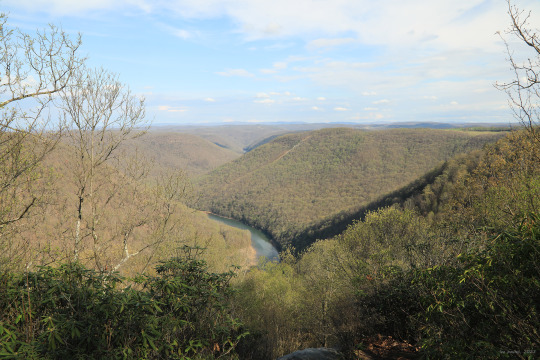

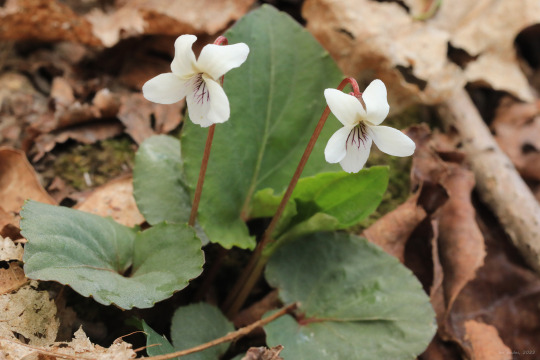





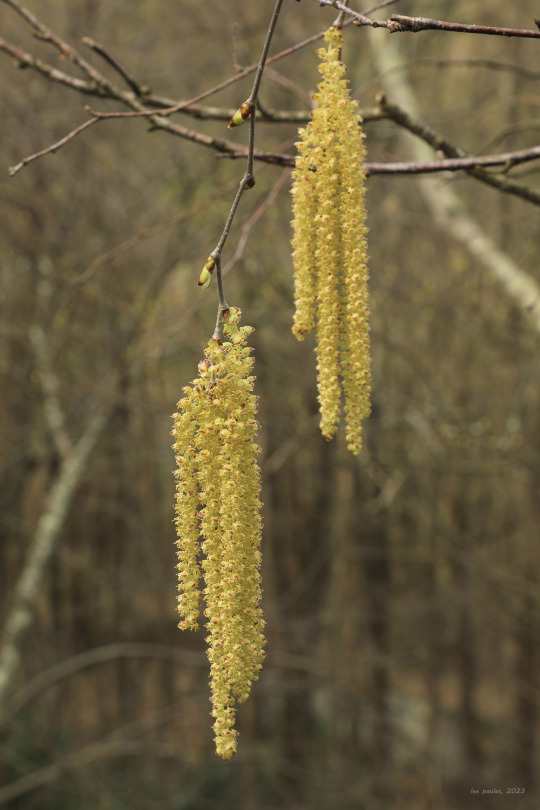
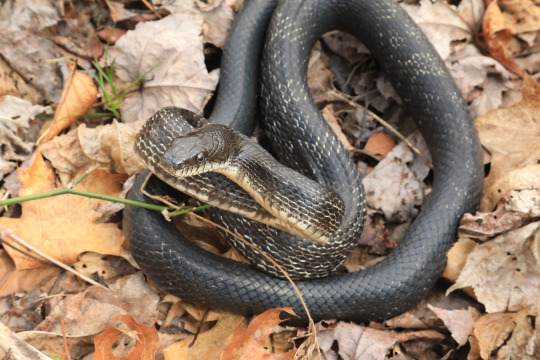
What a gorgeous afternoon for a Mid-April hike in the Cheat River Canyon. Spring’s delicate treasures were out in full force. From top: halberd-leaved yellow violet (Viola hastata); sweet white violet (Viola blanda); broadleaf toothwort (Cardamine diphylla); Carolina spring beauty (Claytonia caroliniana); bloodroot (Sanguinaria canadensis); common blue violet (Viola sororia); Allegheny serviceberry (Amelanchier laevis); sweet birch (Betula lenta) catkins; and a cranky Allegheny rat snake (Pantherophis alleghaniensis) newly out of hibernation.
#appalachia#vandalia#west virginia#cheat river#cheat river canyon#chestnut ridge#snake hill wildlife management area#spring#april#wildflowers#reptile#snake#allegheny rat snake#eastern rat snake#halberd-leaved yellow violet#sweet white violet#broadleaf toothwort#two-leaf toothwort#crinkleroot#carolina spring beauty#bloodroot#common blue violet#allegheny serviceberry#sweet birch#black birch
123 notes
·
View notes
Photo




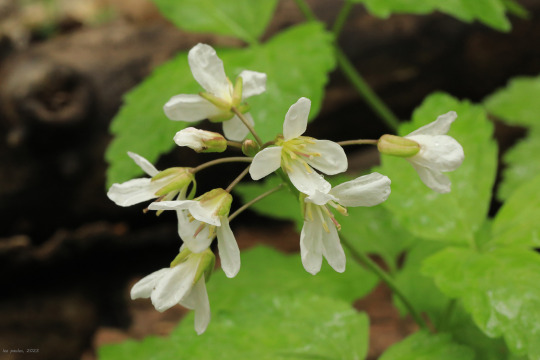
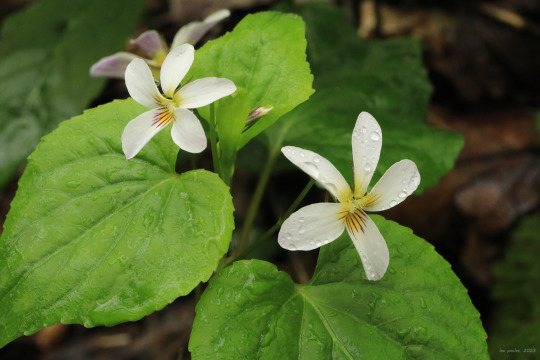




The dreary weather persisted today, so I blew off a planned trip to Ohiopyle and hiked several trails along Clay Run in Coopers Rock State Forest instead. The pink lady’s slipper orchids (Cypripedium acaule) are now coming into bloom, reminding me that May is just around the corner. From top: flowering dogwood (Cornus florida); the plummeting green-yellow flowers of striped maple (Acer pensylvanicum); broadleaf toothwort (Cardamine diphylla); Canada violet (Viola canadensis); two-leaf miterwort (Mitella diphylla); Jack-in-the-pulpit (Arisaema triphyllum); and pink lady’s slipper orchid.
#appalachia#vandalia#west virginia#coopers rock state forest#clay run#late april#wildflowers#spring#pink lady's slipper#flowering dogwood#striped maple#broadleaf toothwort#crinkleroot#pepper root#two-leaved toothwort#canada violet#jack-in-the-pulpit#miterwort#two-leaf miterwort
211 notes
·
View notes
Photo
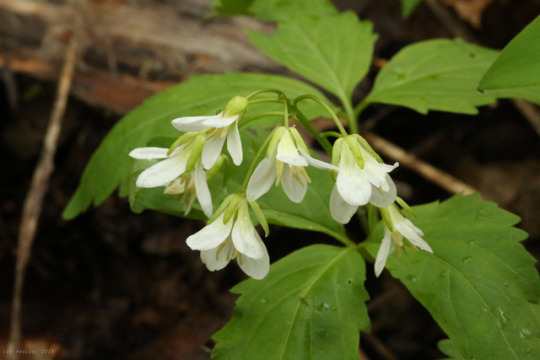


Broadleaf toothwort (Cardamine diphylla), also known as crinkleroot and two-leaf toothwort, is the bigger cousin of cutleaf toothwort; it blooms in mid to late April shortly after its more delicate relative finishes. A member of the mustard family, this spring perennial has a long history of culinary and medicinal use by Native Americans and white settlers. The photographs above were taken on the Clay Run Trail in Coopers Rock State Forest.
#appalachia#vandalia#west virginia#spring#wildflowers#clay run trail#coopers rock state forest#broadleaf toothwort#crinkleroot#two-leaf toothwort
19 notes
·
View notes
Text
I just...want to work in the garden and do nothing else. Stop only to eat and pee. I go in when the daylight’s done. And then all I want to do is look at more plants I can order and talk about my garden. All my plants are native to Ontario or nearby. All with edible parts except one. So. Plant species I have/am getting this year are:
001. Achillea millefolium (common yarrow) The red-flowered cultivar seems to have died over the winter, but the non-cultivar is growing strong and is also creeping past the stone border to become one with the grass. lol
002. Actaea racemosa (black snakeroot/black cohosh) Next weekend!
003. Agastache foeniculum (anise hyssop) Literally migrated from the place I planted it to a place it likes better, I guess. As in, there is no plant where I planted, but there is an anise hyssop in another part of that bed. You do you.
004. Allium canadense (meadow garlic/Canada garlic) Spreading slowly but reliably and super tasty.
005. Allium cernuum (nodding onion) It has flowered each year--this is year 4--but hasn’t spread at all. Very tasty, and I’ve bought some friends to help it along.
006. Allium schoenoprasum (chives/wild chives) Absolutely yum and doing very well.
007. Allium stellatum (prairie onion/autumn onion) Hopefully coming by the end of this month!
008. Allium tricoccum (ramps/wild leek) It will be quite some time before it even makes flowers which hopefully let it spread, so I won’t be able to reap the benefits for a while. But, both plants did come up this year and have now died back as expected. Hopefully they’ll continue to come up.
009. Amelanchier canadensis (Canadian serviceberry) Caterpillars. Are. EATING IT. Gypsy moth caterpillars. This is going to be a problem for some time until they pupate, I guess. Plant’s generally okay, though. I won’t be getting fruit anytime soon, though.
010. Anaphalis margaritacea (pearly everlasting) Very healthy plants keeping the sunflowers under some control. This spring was my first year eating the shoots. Can’t say anything about the taste specifically, as they went into a pasta sauce, but that sauce was delicious.
011. Andromeda polifolia (bog rosemary) Next weekend!
012. Aquilegia brevistyla (smallflower columbine) Growing very well, more flowers this year. Next year I’ll eat some (flowers, only the flowers are edible).
013. Aquilegia canadensis (Canada columbine/red columbine) Flower stalk doesn’t seem as tall this year, but it still has a lot of flowers. They’re a lovely refreshing sweet snack (just the flowers).
014. Arabis alpina (alpine rockcress) Next weekend! I had one last year, but it didn’t survive the winter. The poor thing was so root-bound there was no soil in the pot, so I’m not surprised it didn’t make it. Hopefully the new one will be in better condition.
015. Arctostaphylos uva-ursi (bearberry/kinnikinnick/pinemat manzanita) Not doing great and I’m not sure why. That area is reasonably well-drained and it gets part sun, part shade. Oh well. Maybe I’ll move it to the hill in the back. It seemed to like the hill I had it on at my old apartment.
016. Argentina anserina (silverweed cinquefoil) Hopefully coming by the end of this month!
017. Arisaema triphyllum (jack-in-the-pulpit) It came up! I was sure it had died last year. But no, it’s fine. Male this year. Hopefully female next year (I’m trying to see if the berries can be dried into edibility like the corms, and if they can I want to make jam or something with them).
018. Armeria maritima (thrift sea-pink) Drooping! It’s a drought-tolerant plant that will die if over-watered so I don’t water it more than once a week and I don’t water deeply, but it’s been hot so maybe it needs more or maybe I managed to overwater it anyway. Frick. Flowering very nicely though.
019. Aronia melanocarpa (black chokeberry) Doing just fine. No flowers and I don’t expect them for another couple of years at least, but it’s growing well.
020. Artemisia frigida (prairie sagewort/fringed sagebrush) Already spreading in the bed. Should look very nice when it fills in.
021. Aruncus dioicus (bride’s feathers/goat’s beard/buck’s beard) Growing more quickly than the internet told me it would! And going to flower this year too, which will be lovely.
022. Asarum canadense (Canada ginger) Doing fine for now, but burnt a lot in the sun last year. Likely to do so again. I’m going to plant something in front of it to shade it better. See, I wouldn’t have put it there if it was full sun because it’s a shade to part sun plant, but that area isn’t full-sun, it’s part sun; however, the sunlight it does get is very strong in the summer and the poor thing gets burnt.
023. Asclepias incarnata (swamp milkweed) Growing like a beast! Flowers were gorgeous last year. I don’t expect this to be any different, and maybe some monarch butterflies will pay it a visit.
024. Asclepias ovalifolia (oval leaf milkweed/dwarf milkweed) Hopefully coming by the end of this month!
025. Asclepias syriaca (common milkweed) Mine seemed to come up much more slowly than those I’ve seen elsewhere, but it is a fairly young plant. I expect it will come up earlier next year. And it’s doing fine now.
026. Asclepias tuberosa (butterflyweed) Hasn’t come up yet, but they can take till middle of June to start emerging, so I’m not going to worry about it yet.
027. Asimina triloba (pawpaw) All three trees are alive, though with very different rates of growth. I got them at the same size at the same time, but in trying to figure out what the best thing was for them, I planted one on a hill next to the door of my at-the-time apartment, one by the fence at the opposite side of the yard, and the third I kept in a pot, which I brought in for the winter. That spring, the potted tree leafed out first at the end of April, and the one on the hill in the middle of May. The third didn’t bud at all. I continued to water it, but I was sure it was dead. Then the house my apartment was in caught fire so I had to go to a new place (same landlords, so still allowed to plant on the new property) and didn’t want to leave my plants behind. It was the end of June. All my plants were potted. and I was going to leave the lifeless stick behind AND THEN IT SUDDENLY HAD BUDS. So I potted it and took it too. All three survived the transplant, but the tree I had initially taken inside (but is now outside) is the biggest, and that little stick is still the smallest. lol
028. Asplenium trichomanes (maidenhair spleenwort) Very little still, but seems healthy. I hope for its fronds to spill over my newly constructed garden wall when it’s bigger.
029. Athyrium felix-femina (lady fern) Doing very well, as a fern that can tolerate full sun.
030. Caltha palustris (marsh marigold) It is a marsh plant and there is no pond on the property to plant it, but there is a leaking eavestrough, which I thought would do well enough along with heavy watering. So far I have been correct.
031. Campanula rotundifolia (harebell) Very lush and green. I struggled to keep it alive that first year, but three years later it’s perfect.
032. Cardamine concatenata (cutleaf toothwort) Sometime this summer!
033. Castilleja miniata (paintbrush) Sometime this summer!
034. Ceanothus americanus (New Jersey tea) Not ready to use in tisanes yet, but growing well.
035. Cerastium arvense (field chickweed) The first two years the thing was barely alive, but this year’s it’s moment to shine as it spreads and flowers.
036. Cercis canadensis (redbud) No flowers this spring, but wonderful foliage. Fingers crossed for next year.
037. Comptonia peregrina (sweetfern) Next weekend!
038. Coreopsis lanceolata (lance-leaved tickseed) The first plant I attempted died, but this one’s doing very well.
039. Cornus canadensis (bunchberry) Next weekend! I mean, my plant from last year would likely be fine if the squirrels hadn’t dug it up, as would the one before that (because that one came from the old place and had survived the winter just fine!). So, I’m going to plant the new one in a different spot and hope the fluffy-tailed rodents leave the poor thing alone this time.
040. Cornus florida (flowering dogwood) Just a baby still, but its leaves are nice and green. I had one before it that really liked the hill I had planted it on back at the old place but died in the pot before I could put it in its new home.
041. Cystopteris bulbifera (berry bladder fern) Doing just fine. I love my ferns.
042. Dalea purpurea (purple prairie clover) Hopefully coming by the end of this month!
043. Deschampsia caespitosa (tufted hair grass) Not doing too well. Was fine last year, so I’m not sure what’s going on.
044. Echinacea purpurea (purple coneflower) I’ve always loved these. They’re edible, medicinal (with caution), have lovely flowers, and attract lots of pollinators including bees and butterflies. Mine is doing perfectly. No flowers yet this year, but very green healthy foliage.
046 Erythronium americanum (trout lily/dogtooth violet) Still no flowers this spring, but they did come up, so maybe next year.
047. Eupatorium purpureum (sweet-scented Joe Pye weed/gravel root/purple Joe Pye weed) Soon! Also, do you know how this is eaten? Its root is literally burnt and then you use the ashes to flavour your food. The plant is otherwise poisonous, so how it was found out that it could be used this way conjures up amusing scenarios for me.
048. Fragaria vesca (woodland strawberry/wild strawberry/alpine strawberry) I have strawberries! They’re far from ripe yet, but developing well. They’re also spreading over the hill I planted them on and will hopefully give the garlic mustard and dog-strangling vine a run for their money.
049. Fragaria virginiana (wild strawberry/Virginia strawberry/common strawberry/mountain strawberry) Because one native species of strawberry isn’t enough, I have both. This one is also making strawberries and nicely filling out the area I put it in.
050. Galium boreale (northern bedstraw) Newly planted! The first one of these I planted didn’t survive the winter, but I hadn’t been able to plant it until autumn (because I hadn’t yet been told where I could plant). This one has the rest of spring, the whole summer, and fall until frost to establish itself, and I’ve seen a number of them growing wild at the edge of the ravines, so it should be fine.
051. Gaultheria procumbens (American wintergreen/eastern teaberry/boxberry/checkerberry) Next weekend! I actually already have one and have had it for a couple years, but it’s another that came so root-bound there wasn’t any soil in the pot. I planted it hoping for the best, but it seems to be in a very slow decline. So I’m going to plant another one, hopefully not so root-bound and that will maybe either give it a boost (plants of the same species will often help each other when sick by transferring nutrients) or else take over when the first one dies.
052. Geum aleppicum (yellow avens) I didn’t plant this, and I can’t find it for sale anywhere anyway, but it’s a common plant that shows up as a weed. Being native as well as edible, it’s allowed to stay wherever it isn’t directly in my way.
053. Geum canadense (white avens) Same as above. lol Anyway, both species have attractive foliage. They’re likely not used as garden plants because of how common they are as weeds and because their flower stalks are long and leggy. But I’m happy to have them.
054. Geum rivale (purple avens) Newly planted! This one is offered as a garden plant, though fairly rare, and I’ve finally got my hands on one! All of the Geum species in my garden seem to be doing just fine, so I expect this will fine too. It’s the first plant I’ve put in a new area that doesn’t drain very well which makes it perfect for plants like this one that grow in clay on stream banks.
055. Geum triflorum (prairie smoke) Green leaves. Flower stalks up. This is a pretty reliable plant because it doesn’t die back in the winter, it just sort of sits there waiting for spring and then resumes growth like nothing happened. The first year it drooped a lot but once it established itself there was no stopping it and the transplant went smoothly too.
056. Grindelia squarrosa (gumweed) Hopefully coming by the end of this month!
057. Helianthus divaricatus (woodland sunflower) This is a sunflower that can actually stand a fair bit of shade. I thought mine had died last year due to the foliage and stemming dying back after a squirrel broke it and it and it was still summer. But it’s come up this year and I’m starting to think nothing short of cooking a sunflower’s roots will actually kill it.
058 and 059. Helianthus nuttalli (Nuttall’s sunflower/common tall sunflower) and Helianthus pauciflorus (stiff sunflower/beautiful sunflower) All I know is, I ordered both, I received two small plants, by the time I got them in the ground they were barely alive, that area is now being overtaken by sunflowers, and it could be one species, or it could be both, I don’t know. I did thin out some shoots this spring and add them to a very flavourful pasta sauce. I also thinned out a bunch of their roots last fall. To look at them, you wouldn’t know that either of these had happened, and I’m going to have to thin out more. They’re also putting up shoots between the stones of the cement path. There will be sunflowers here until the end of time.
060. Helianthus tuberosus (sunchoke/Jerusalem artichoke/suntato) Because I don’t learn, I planted yet another sunflower species last year, in a different area, because dammit I want my suntatoes that taste like artichokes. I planted one last year. I took and ate a bunch of tubers in the fall. There are currently five plants. This should be interesting.
061. Heliopsis helianthoides (false sunflower/sweet oxeye) After getting off to a rocky start last year, this one’s doing just fine, and also looks to be living up to its resemblance to sunflowers in more than just appearance.
062. Hibiscus moscheutos (swamp rose mallow) One of them appears to have died so I hope the other isn’t headed the same direction. Seems to be coming up normally though. Also I learned the flowers can change colour from year to year which was a huge surprise to me from the first year to the second. No idea what it will be like this year.
063. Hierochloe odorata (sweet grass/vanilla grass) It flowered last year, which was lovely. I hope it does so again this year. Foliage is nice and green anyhow.
064. Humulus lupulus (common hop) Growing nicely now, though its first several shoots died this year. It seems to just be a very impatient plant in the springtime despite not being very frost hardy. So it put out shoots, which died in the frost, and then put out more, which also died, etc. until finally there was no more frost so it just kept growing. That’s one way to do it, I guess. lol Most other frost-tender plants tend to be more cautious about when they put out new growth. had a hop plant at my old apartment, which really liked the place I put I put it in, but it died when I potted it to try and take with me.
065. Impatiens capensis (jewelweed/spotted touch-me-not) Hopefully coming by the end of this month!
066. Juglans nigra (black walnut) This tree has likely been on this property since before I was born. I tapped it spring before last. I’ll tap it next spring too. Seems to be a healthy tree.
067. Kalmia latifolia (mountain laurel) They’re not native to Ontario but they are native to eastern North America, in the Appalachian mountains. I figured if they could survive mountain weather they could handle south Ontario winters, and so far it has. It’s not edible but I fell in love with them a long time ago when reading David Attenborough’s The Secret Life of Plants. And they’re making buds this year!
068. Lactuca canadensis (Canadian lettuce) Yes! We have a native lettuce. Most people will pull it up as a weed along with dandelions and thistles, though. I let it stay wherever possible. It’s not like I can just buy a new one, so I count myself lucky when they come up in my garden.
069. Lilium michiganense (Michigan lily) It made smaller ones, but they don’t seem to have survived for whatever reason. The older ones are very robust this year, though, and are budding with what looks like will be many flowers.
070. Lilium philadelphicum (wood lily) Newly planted! I have not had much luck with these, but hopefully this year’s the year. I have two plants, so maybe they’ll help each other.
071. Lindera benzoin (spicebush) No flowers or butterflies yet, but it’s a healthy bush and lives up to its name.
072. Linum lewisii (blue flax) Newly planted! I’ve wanted these for a long time but the places that carried them either wouldn’t deliver or didn’t have them as plugs or potted stock (I find seeds too unreliable). But now I have a couple in the large stone garden pot that I specifically filled with dirt that would allow for good drainage, for those plants that can survive the cold but not sitting in water.
073. Lupinus perennis (sundial lupine) Soon! Or I already have it. Not sure. See, I was sent an email by the company saying I’d probably accidentally gotten a bigleaf lupine instead and they gave me a coupon for the following spring to get a confirmed sundial lupine, but there is a chance I already have it. Either way it’s a nice plant, so whether I have two plants of the same species or two different species is fine.
074. Lupinus polyphyllus (bigleaf lupine/common lupine) I actually haven’t been able to find this species available for delivery anywhere, so if that is what I currently have, then I’m delighted and this is the best plant mixup that could possibly happen (there have been a number). Whatever it is is a very attractive plant even with just the foliage. I hope it makes flowers this year.
075. Mahonia repens (creeping Oregon grape) Speaking of plant mixups! The first time I ordered this I got a Potentilla nepalensis instead. I didn’t know it at the time, as it had a tag saying “Mahonia repens”, but then it flowered...I wouldn’t have minded terribly much if it had been a native Potentilla species, but “nepalensis” is definitely not that. Well, I emailed the company with a photo and they promptly delivered not one, but two creeping Oregon grape plants, and both seem to be doing okay, making new growth, survived the winter, which the potentilla did not.
076. Maianthemum stellatum (starry false Solomon’s seal) They seem to be doing well! They flowered, but I don’t know if there will be berries. Next year maybe, but then you don’t really see Maianthemum berries until late summer, so maybe there will be a couple this year.
077. Mentha arvensis (wild mint) It’s doing exactly what mint does. Tastes wonderful, which is a great reason for thinning it out and pulling it out from between the sidewalk stones.
078. Mertensia paniculata (tall bluebells) Currently flowering. Despite the name, though they do grow taller than their cousin the Virginia bluebells, I wouldn’t say they’re a bigger plant overall. Very nice though. The flowers are a delicate light blue.
079. Mertensia virginica (Virginia bluebells) When I planted the rootstock in the early summer and nothing came up at all, I thought they had died. But nope! They came up vigorously this spring, with huge leaves and incredibly blue flowers. The flowers are don and it’s starting to die back now, but what a gorgeous springtime plant it is.
080. Monarda didyma (scarlet beebalm) My theory is if you put two members of the mint family next to each other, they’ll keep each other at bay. I’m probably wrong. Anyway, this is already spreading in two directions. Last year caterpillars at a lot of its flowers. I hope that won’t happen this year.
081. Monarda fistulosa (wild bergamot) Has become a very big plant, but politely hasn’t really left it’s immediate area. They make great dried flowers after the winter, by the way, as the seedheads retain the scent. Especially if you squeeze them.
082. Monarda punctata (horsemint) This is starting to fill out now, but compared to the other members of its genus took a very long time to go past a teeny tiny little growth. Last year it got huge shortly after I planted it, so we’ll see if it does that this year. I hope so. The bees, wasps, and other pollinators absolutely loved it.
083. Myosotis laxa (smallflower forget-me-not) I didn’t plant it, I can’t even find it available for sale. It just grows as a weed. It’s just as blue as other forget-me-nots, but with stems that are very leggy and even smaller flowers than the popular garden species. But it’s native so it stays where it’s not directly in my way. It’s very prolific, lots of plants in the garden.
084. Myrica gale (sweet gale/bog myrtle) Only just started making new growth. It seems to be on its way out and I’m not sure why, but it makes me sad. I think last year was really hard on it being so hot so early and I didn’t have a hose then, so I was stuck carrying buckets of water up from my apartment in the basement. But I have a hose this year and I’ve been watering regularly, so maybe, just maybe, it will spring back into action this year. It’s such a pretty bush when in full foliage and the leaves taste like green tea.
085. Oenothera fruticosa (narrow-leaved sundrops) Next weekend! I’ve grown another species which has finished its lifecycle (they’re biennial) and sadly doesn’t seem to have successfully reseeded itself. But maybe this one will.
086. Onoclea sensibilis (sensitive fern) This poor thing struggled hard last year. I planted it between a tree and the house, but it still got a lot of sunlight. Still, it came up this year, and in my experience, second year plants tend to be much more hardy, so we’ll see. It’s doing fine for now.
087. Opuntia fragilis (fragile prickly pear) I did put it in a fairly dry area that gets full sun, but it does struggle in the winter and spring. It is starting to bounce back, though, just like it did last year, and the pieces it scattered are making roots of their own. All of whom are spiky bastards.
088. Opuntia humifusa (eastern prickly pear/devil’s tongue) This did just fine. I had it in a big stone pot which I moved to an area that gets no rain or snow on it, and it’s making new growth now that I’ve moved the pot back into the full sun. It like to spike me whenever I move the pot.
089. Osmundastrum cinnamomeum (cinnamon fern) Next weekend!
090. Oxalis stricta (yellow woodsorrel/sourgrass) It’s not technically native to Ontario, but it is native to Michigan and moved up here decades or possibly centuries ago. I didn’t plant it and you can’t find it in stores because it’s considered a weed, but it is coming up in my garden, it doesn’t hurt anything, and it is a delicious little plant, so it stays.
091. Parthenocissus quinquefolia (Virginia creeper) I didn’t have to buy this because it was already in the yard (it’s common in the ravines), but if it wasn’t I would have, because it’s gorgeous and I like the taste of the berries. It’s a native relative of Boston ivy, so if you’re wanting a wall climber, please get Virginia creeper instead. They’re available at a lot of garden centres and online.
092. Phlox divaricata (woodland phlox/blue phlox) It’s growing, but I think one of the white avens is overcrowding it, so I’ll probably dig that one up and eat it so the phlox can have more space.
093. Podophyllum peltatum (mayapple) Three plants in last year. One plant up this year. Oh well. It’s growing nicely, so hopefully it will spread.
094. Polygonatum biflorum (smooth Solomon’s seal) Hopefully coming by the end of this month!
095. Polystichum achrosticoides (Christmas fern) It doesn’t die back in the winter! I mean, the leaves get kind of yellowed, but otherwise just hangs out and makes new growth in spring. My first attempt with ferns (ostrich ferns) was a failure, but so far all my other fern species have been successful and are currently thriving.
096. Prunus americana (American plum) It’s very top heavy when leafed so it flops over whenever it rains which is kind of funny, but it seems to be doing fine.
097. Prunus nigra (black plum/Canada plum) My first black plum died, but this one seems fine.
098. Prunus pumila (sand cherry) Soon! And it better bloody be a sand cherry and not a purple-leaf sandcherry, which is a hybrid, like the last company I ordered one from sent me. But that company didn’t specialize in native plants and carried both plants, whereas this company does specialize in native plants and does not advertise the hybrid at all.
099. Prunus serotina (black cherry) This is the very cherry that is used to flavour black cherry ice cream! But my little tree (not that little anymore lmao) hasn’t made flowers yet. It has nice foliage though it keeps trying to grow into the neighbour’s fence. Don’t know why. The sun doesn’t come from there. Maybe it will flower next spring.
100. Pycnanthemum tenufolium (slender mountain mint) Despite being part of the mint family, this is actually a very polite plant so far that stays in its immediate area.
101. Pycnanthemum virginiana (Virginia mountain mint) Just as polite as its cousin. My first died and I blame the person who lived in another unit who decided that garden bed was an ash tray. I managed to put a stop to that, got all the cigarettes out, dug out a stump, added new dirt, and planted a new Virginia mountain mint as well as bride’s feathers. That particular tenant isn’t there anymore and nobody else does anything with the outside, except to put a garden hyacinth there, which I’ve left in its pot and been watering. I’m not just going to leave the poor thing to die. Anyway, the Virginia mountain mint flowered last year and I hope it does so again this year.
102. Ratibida columnifera (yellow coneflower/upright prairie coneflower) Newly planted! I don’t like to get the cultivar versions if I can avoid it, but I will if that’s all that’s available, or in this case, to get the plants I really wanted, I needed to get something that would put me over the minimum cost. But I didn’t want to leave it at that, so I bought a non-cultivar this year so they can be friends.
103. Ratibida pinnata (gray-headed coneflower/yellow coneflower/pinnate prairie coneflower) This almost flowered last year and the I accidentally broke it with the hose. That will not happen this year. I don’t see a flower stalk yet, but the leaves look healthy.
104. Rhus aromatica (fragrant sumac) It’s putting out flowers, but it did so last year and nothing happened, so I guess we’ll see this year.
105. Rosa blanda (smooth rose) A rose without thorns! Or almost. It’s got leaves out, but it’s a slow grower for a rose and hasn’t flowered yet.
106. Rubus occidentalis (black raspberry) This was supposed to be a red raspberry because black raspberries are easy to find in the ravines, but that’s okay, and I did order a new red raspberry which will hopefully actually be red. lol
107. Rubus strigosus (American red raspberry) Soon! Sometimes considered a variety of Rubus idaeus, which is the one you find in grocery stores. There is one patch I’ve found of them in the ravines, but they’re not nearly as common here as the black raspberry. Hopefully this new plant I get will actually be the red raspberry.
108. Rudbeckia laciniata (cutleaf coneflower/green-headed coneflower) There are two plants with very different leaves growing there. One of them I hope is the plant I intended, but won’t know until they flowers. They’re both doing well, whatever they are.
109. Sambucus canadensis (common elderberry) It’s making flowers this year! I learned the hard way that this species does NOT like being transplanted to a pot, which I had to do to take with me to my current apartment. However, it did eventually bounce back and didn’t mind being transplanted to its current location, which it likes just fine.
110. Shepherdia canadensis (Canada buffaloberry) Next weekend!
111. Solidago canadensis (Canadian goldenrod) I tried to buy this plant but they accidentally sent me an aster species instead. However, there are a bunch of goldenrods growing a different area that I didn’t plant and I believe to be this species.
112. Solidago nemoralis (gray goldenrod) Droops a lot but bounces back quickly.
113. Solidago simplex (spike goldenrod/sticky goldenrod/Mt. Albert Goldenrod) I’ve tried this once before and it died, possibly from being small enough that the ledge it was next to prevented it from getting enough sunlight. I’ve planted the new one far enough from the ledge that it does not get shaded by it, so hopefully that will do the trick.
114. Spiraea alba (meadowsweet) The first year in the new place it struggled a bit, but it’s fine now and it flowered last year.
115. Symphoricarpos orbiculatus (coralberry) Next weekend! It’s also the first time I’ve seen it available anywhere.
116. Symphyotrichum ciliolatum (fringed blue aster/Lindley’s aster/northern heart-leaved aster) A very polite aster, or maybe it’s just being kept under control by the sweet grass (055). Its foliage is that lovely gray-green colour often referred to as “blue” when people talk about holly, spruce, and hosta leaves, and its flowers are that pale blue people often think of as purple or periwinkle but shows up digitally as light blue.
117. Symphyotrichum cordifolium (heart-leaved aster) Doing fine where I planted it.
118. Symphyotrichum laeve (smooth aster) I didn’t have the tag and thought this was a violet when I planted it. It now thinks it owns the space, but looks very nice when it’s in bloom.
119. Symphyotrichum lanceolatum (panicled aster/lance-leaf aster/willow aster/tall white aster/eastern line aster/white-panicle aster/narrow-leaf Michaelmas daisy) Lots of common names. It decided it belonged on the sidewalk last year, but surprisingly agreed when I placed its branches behind the stone line of the garden. We’ll see if we can come to the same agreement this year.
120. Symphyotrichum novae-angliae (New England aster) Not flowering yet this year, but looks it’s getting ready. They’re such a lovely rich violet to purple and I love that they flower so late into autumn too.
121. Taraxacum officinale ceratophorum (fleshy dandelion/horned dandelion/rough dandelion) Obviously didn’t buy it. lol But it is in my garden along with non-native subspecies. Since they don’t harm the plants they grow among, they can stay as long as they’re not in my way.
122. Trillium erectum (red trillium) Next weekend! And I possibly already have one. See, I ordered three trillium species last year as bulbs and planted them, but lost two of the tags. Only two species came up and only the one with the tag flowered this year. So I don’t know if the one that didn’t flower was erectum or grandifolium, so I ordered both again.
123. Trillium flexipes (nodding trillium) It came up this year and it was lovely. Died back now though.
124. Trillium grandiflorum (great white trillium) Next weekend! And I might already have one: see 109. Ontario’s provincial flower. I once made a set of coat of arms style designs with each of the provincial flowers and animals.
125. Urtica dioica gracilis (stinging nettle) Planted itself in my garden back at the old place and if I didn’t trust the other plants would be safe after I left (I was right, by the way; the whole backyard has been turned over) I definitely didn’t think this would be either, so I potted it to take with and got stung for my trouble, but it’s happy in its new home. Lives up to its name, of course, but I did eat a few of the tops earlier this year in soup and later in pasta sauce, so I suppose we’re even.
126. Vaccinium angustifolium (lowbush blueberry/wild blueberry) When you see “wild blueberries” in the grocery store in Ontario, it’s this. It always seems to struggle with mould in the spring. Every year I’ve had it. I got it a friend in hopes it would help, but they seem to both be dealing with it now. I’ll have cut back the bad branches and hope that helps. It usually does, but I don’t know why it starts in the first place. None of the neighbouring plants are suffering.
127. Vaccinium corymbosom (highbush blueberry) This is the species you’ll most often see in the grocery store in Ontario as “blueberries”. My bush always makes some flowers and berries, but it’s not doing great right now. Not sure why. It doesn’t get mould the way the lowbush blueberries do. I hope it’s not on its way out. You can get them at a lot of garden centres, but there’s usually a minimum amount of plants or a minimum cost, and garden centres that specialize in native plants don’t often carry these, while garden centres that don’t often don’t have any other native species or at least not any I need or have room for. So for my purposes they’re kind of hard to get.
128. Verbena hastata (blue vervain) Was off to a slow start this year, but it’s doing just fine now.
129. Viburnum acerifolium (mapleleaf viburnum) Next weekend!
130. Viburnum lentago (nannyberry) It’s doing fine, just fine, but I doubt I’ll get any berries for some time yet.
131. Viburnum nudum cassinoides (Witherod viburnum) A lovely little bush so far. Maybe I’ll get flowers next spring.
132. Viola adunca (hookedspur violet/western dog violet/early blue violet) Hopefully coming by the end of this month! My first go with this plant was not successful. Hopefully better luck this time.
133. Viola blanda (sweet white violet) Exactly what it says on the tin. There’s a delicate pink to the centre, and the foliage is nice too.
134. Viola canadensis (Canada violet) It’s tall for a violet, and spreading nicely with lots of flowers.
135. Viola labradorica (purple Labrador violet) Next weekend! Despite it’s name, it is also native to Ontario.
136. Viola sororia (wood violet/blue violet) This is most common violet you see generally, which makes it hard, though not impossible, to find in garden centres. However, they’ve planted themselves in the yard and I’ve successfully transferred one to one of the beds. I have other place I want to put the rest before I dig up that area.
137. Vitis riparia (riverbank grape) I have two plants because I didn’t realize when I bought it that hiding among the weeds in another part of the garden there already was one. Oh well. Guaranteed cross-pollination of two genetically diverse individuals. They’re both doing well.
138. Zizia aurea (golden alexanders) They’re doing well. It looks a lot like wild parsnip, which it is related to, but it’s much more friendly, and I ate some this spring.
I may be able to order more. We’ll see. One of my go-to places says they won’t ship until “opening day”. I guess they mean when their area reopens, but that might not be till next year. Meantime, I will continue to construct my garden wall in the back.
32 notes
·
View notes